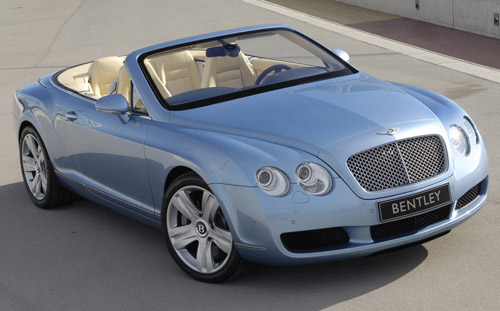Another Unintended Acceleration Case – Shocker Not a Toyota
Tim Esterdahl | Mar 21, 2012 | Comments 3
A defense attorney in Palm Beach, Fla., is claiming that his client’s vehicle developed a computer malfunction that caused the car to lurch forward and slam into another vehicle. Another case of unintended acceleration for Toyota? Nope, try a “far-fetched” defense of a Bentley.

In another twist of the unintended acceleration issue, a defense attorney is claiming that his client's 2007 Bentley rammed another car due to a computer malfunction. Sound familiar Toyota owners?
“Goodman’s defense attorneys, led by high-powered lawyer Roy Black, claim the Bentley developed a computer malfunction that caused it to lurch forward and slam Scott Wilson’s Hyundai into a canal,” as reported by Jeff Ostrowski of the Palm Beach Post News.
The story goes on to say that Black said the defect caused the car to surge out of control no matter how desperately Goodman tried to stop it, and he promised to produce engineers who would back the story.
And to the surprise of no one “A spokeswoman for Bentley, a British brand known for high-end cars, disputed Goodman’s defense.”
“The defendant’s claims are without merit,” said Bentley’s Valentine O’Connor. “We have complete confidence in our vehicles, and are prepared to demonstrate such confidence when appropriate.”
And the National Highway Traffic Safety Administration’s database doesn’t list any issues.
“The kind of wild surge of acceleration the defense seems to be blaming is entirely different,” British auto reviewer Ben Oliver was quoted as saying. “In 15 years of driving supercars, I’ve never experienced or heard of such a thing, and I’d love to see them produce an independent automotive engineer who could explain how that could happen.”
An interesting fact is the weight difference between the vehicle involved. The Bentley weighs in at a hefty 5,501 pounds, according to Bentley’s website. The 2012 Toyota Tundra, for instance, has a curb weight of 5,250 pounds. The curb weight of the Hyundai Sonata? A paltry 3,300 pounds.
What this case really says to Toyota owners is here we go again. The “unintended acceleration” issue that still plagues Toyota’s from time to time (see: CNN story) is now rearing its head in other ways such as a criminal’s defense in a manslaughter trial. The question that allows follows these stories is; is it unintended acceleration or driver error?
I think we all can draw a conclusion from the story, it will be interesting to see what the jury decides. One does wonder if the recent stories about Toyota’s will influence the jury members.
What do you think? Does the defense make you think twice with all the Toyota stories out there? Far-fetched or a brilliant defense tactic?
Related Posts:
Filed Under: Auto News


I do believe driver error. Notice the words “Drunkenly Rammed”. Jail time for the rich guy. Move over Bubba we have company.
After lengthy investigations, virtually every case of unintended accelerations comes down to stomping on the wrong pedal, not realizing one’s mistake and then refusing to be truthful with oneself and others.
There are cases of stuck throttles, but these are very rare and happen more with old mechanical linkages and where some part hasn’t been maintained. The car doesn’t become demon possessed and accelerate on its own; what happens is the throttle stays open after you release it. Case in point: I was driving a big-block from the ’60s which has a very nicely made all mechanical accelerator linkage. No cables, all rods and cranks. The car also had a broken engine mount, which I should have fixed but… teenager… ahem. So at one point the right conditions lined up, and after opening the throttle to 3/4 it stuck.
Tick
Tick
Ding! Shift into N.
Whew.
I’d traveled about a car length before common sense woke up and reminded me to shift out of Drive. It’s something a person should be alert for.
In this sort of case the throttle doesn’t open on its own; it sticks open after you step on it. This happened with an antique with a critical part previously broken.
Chances of that happening on a new Bentley: ZERO.
Absolutely correct. 99.9% of the time, it’s driver error.